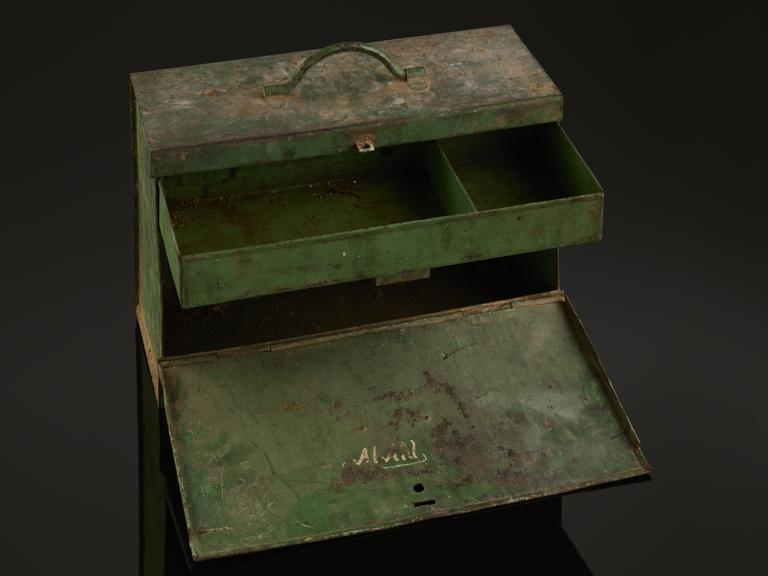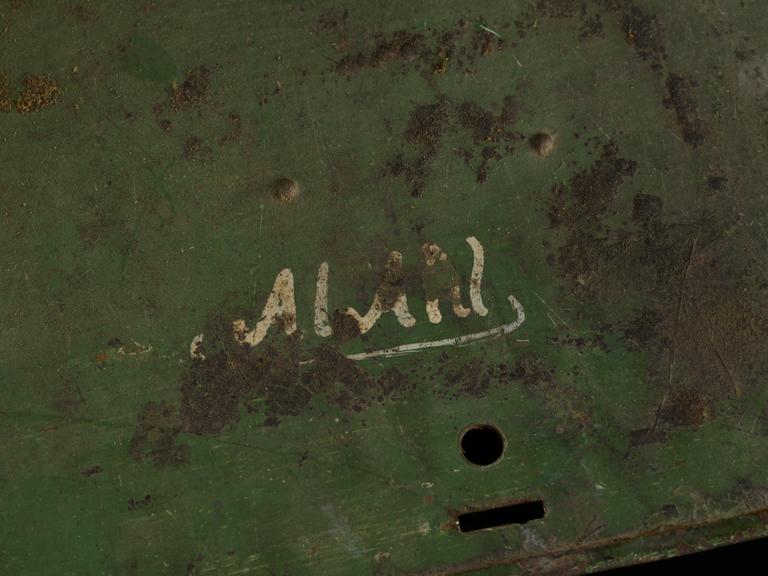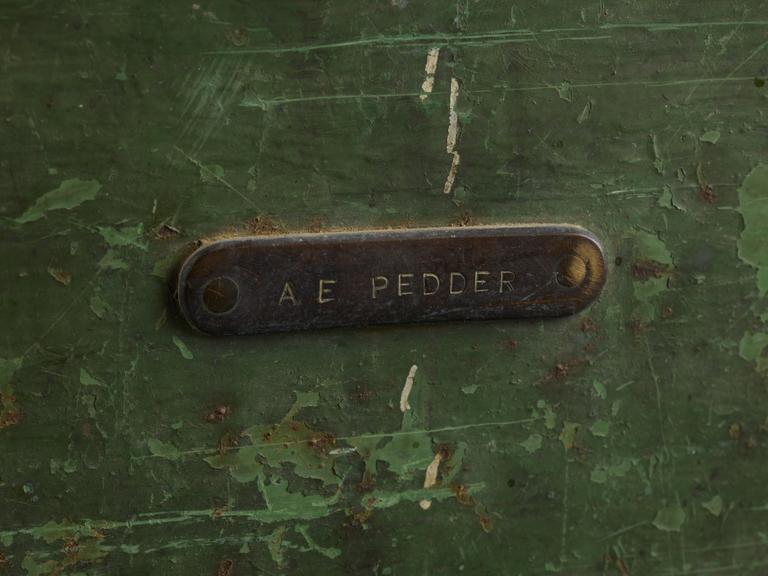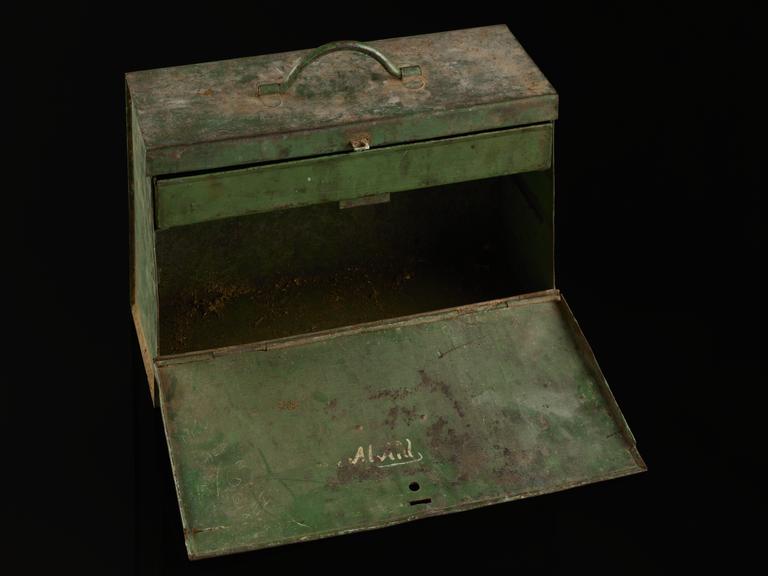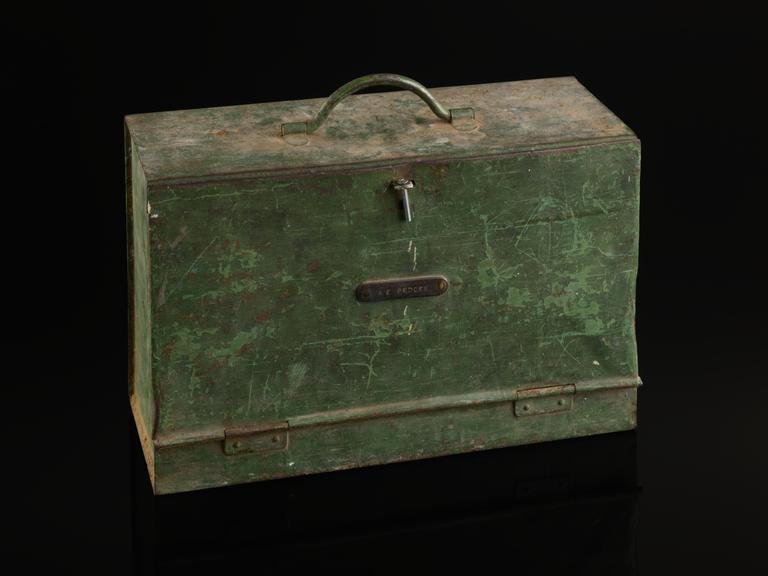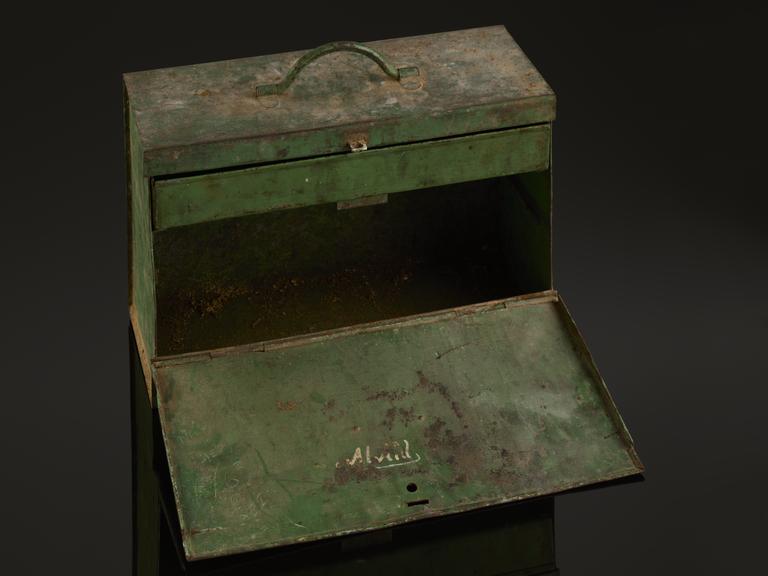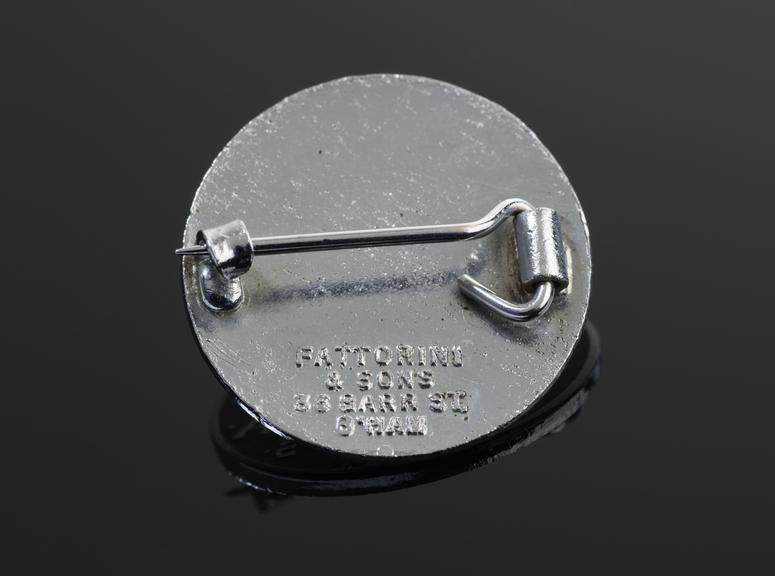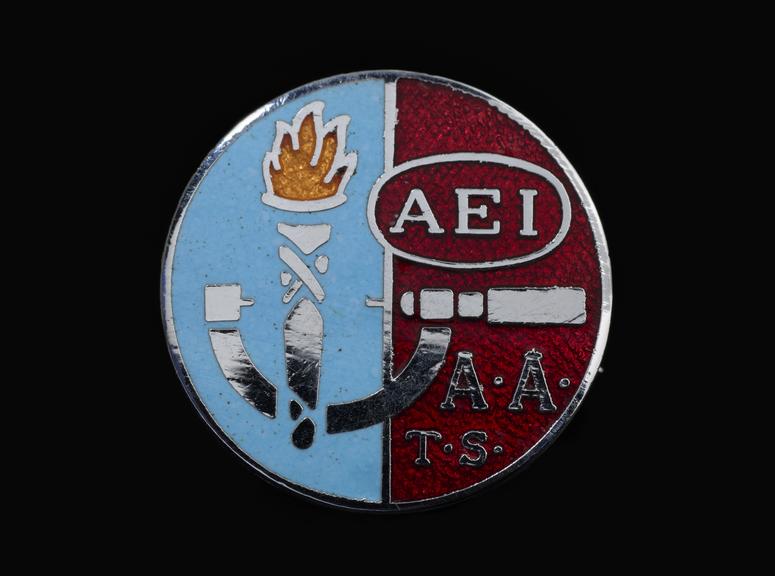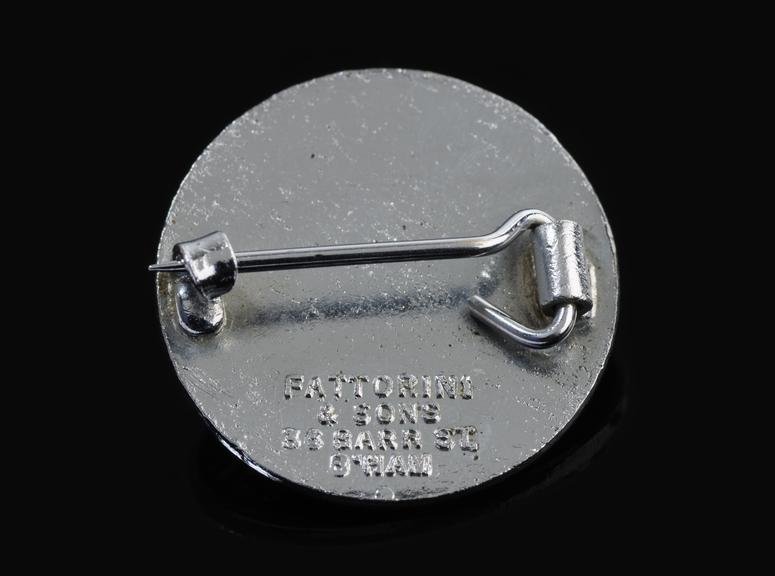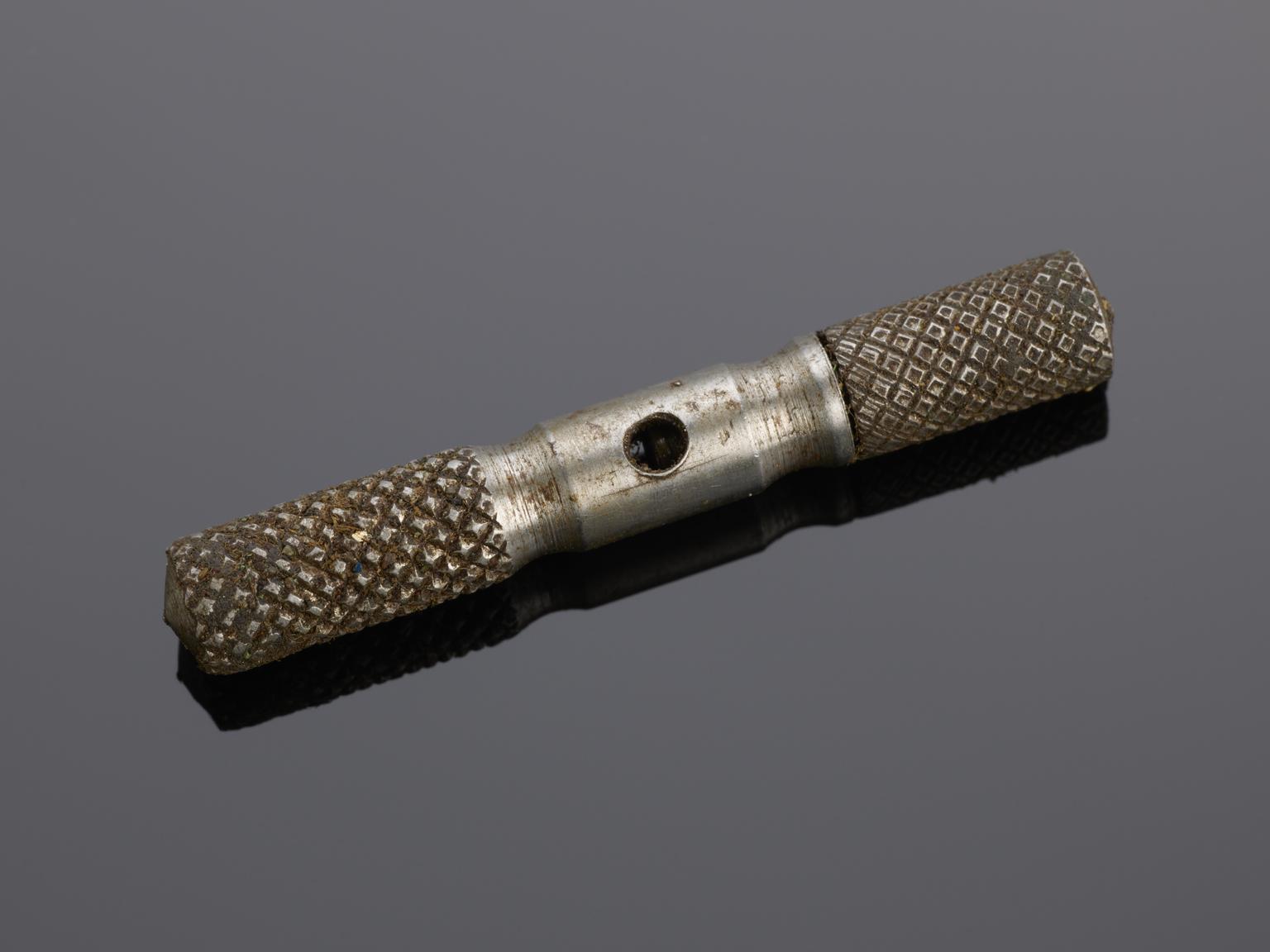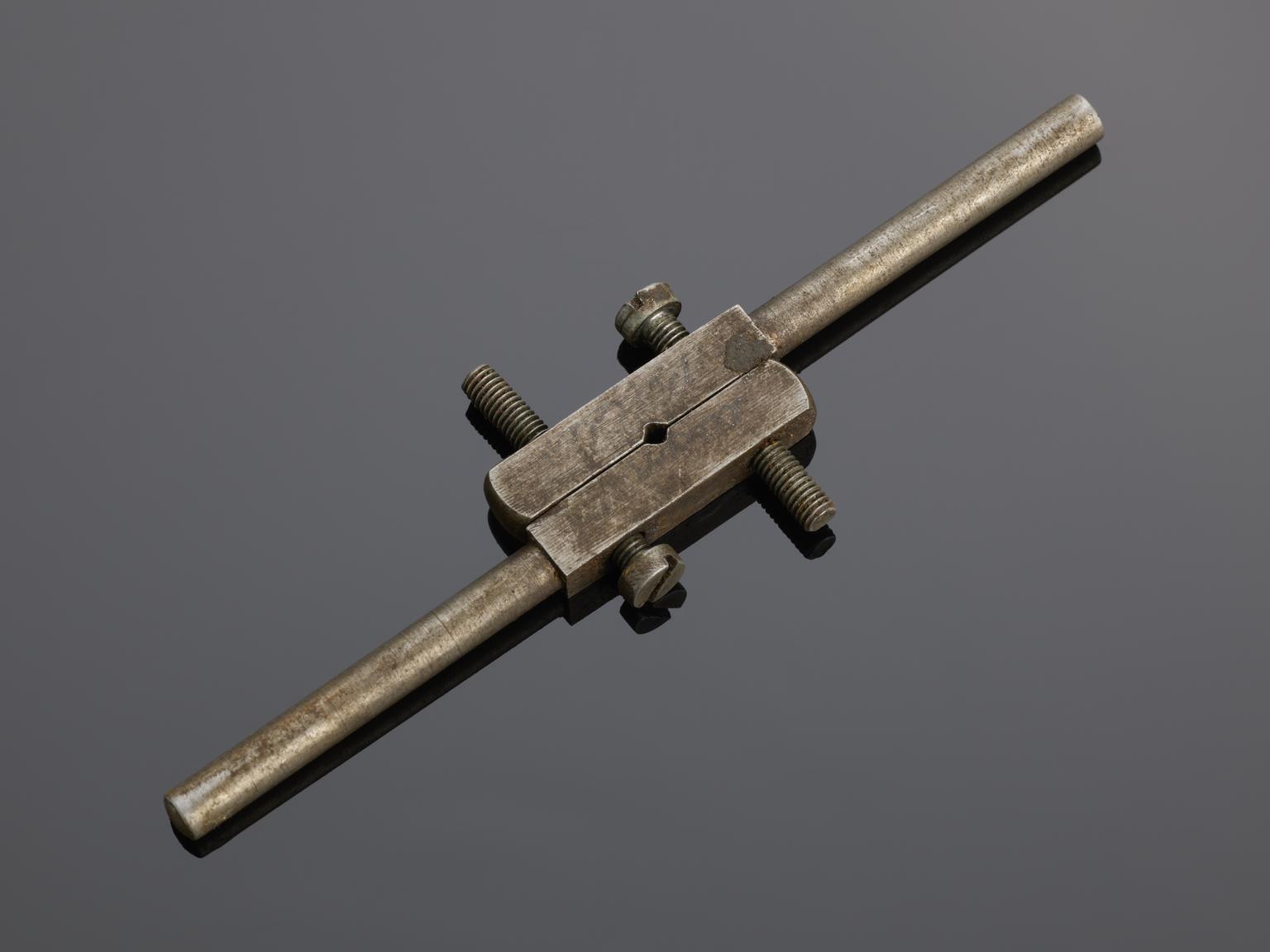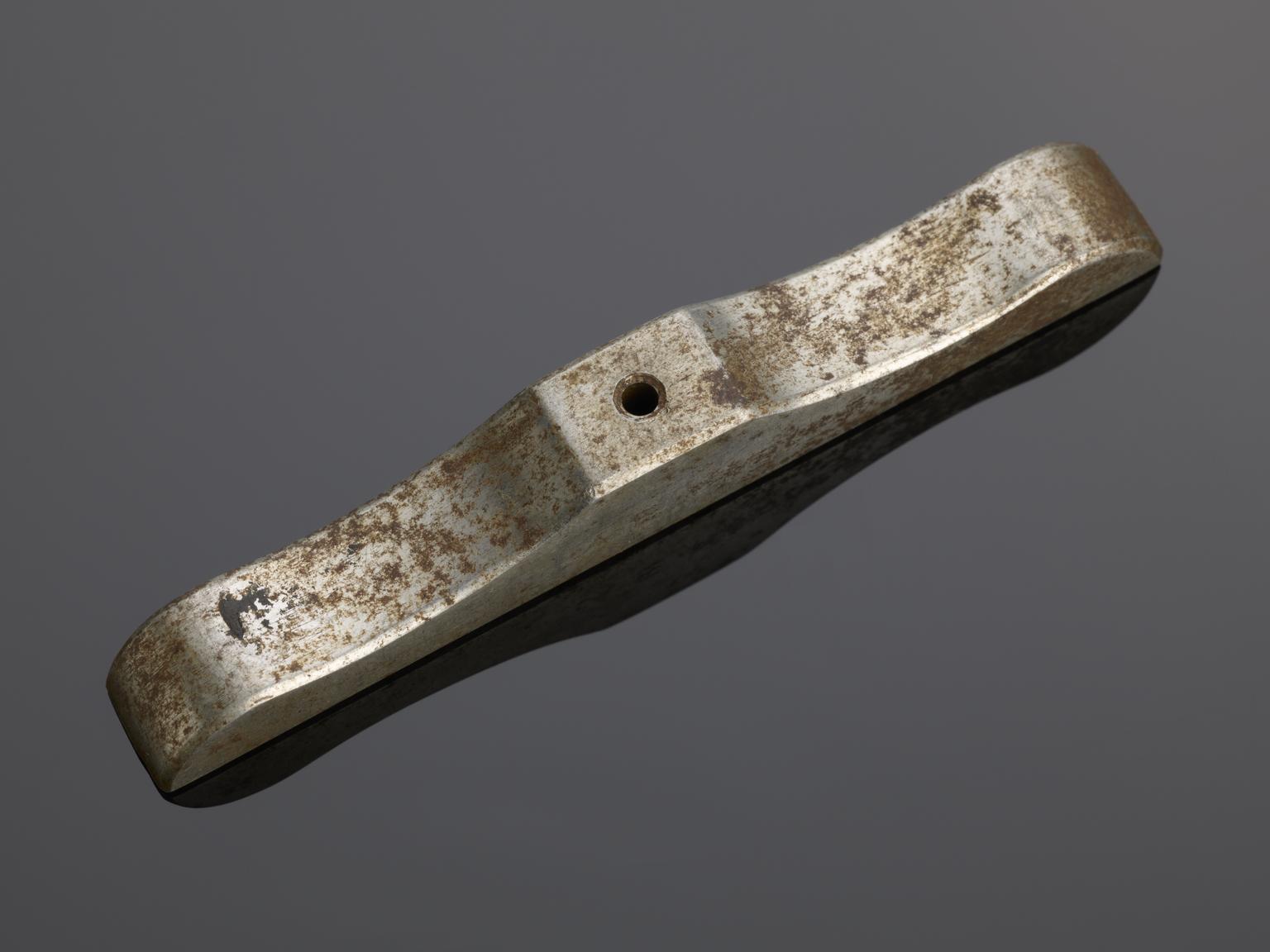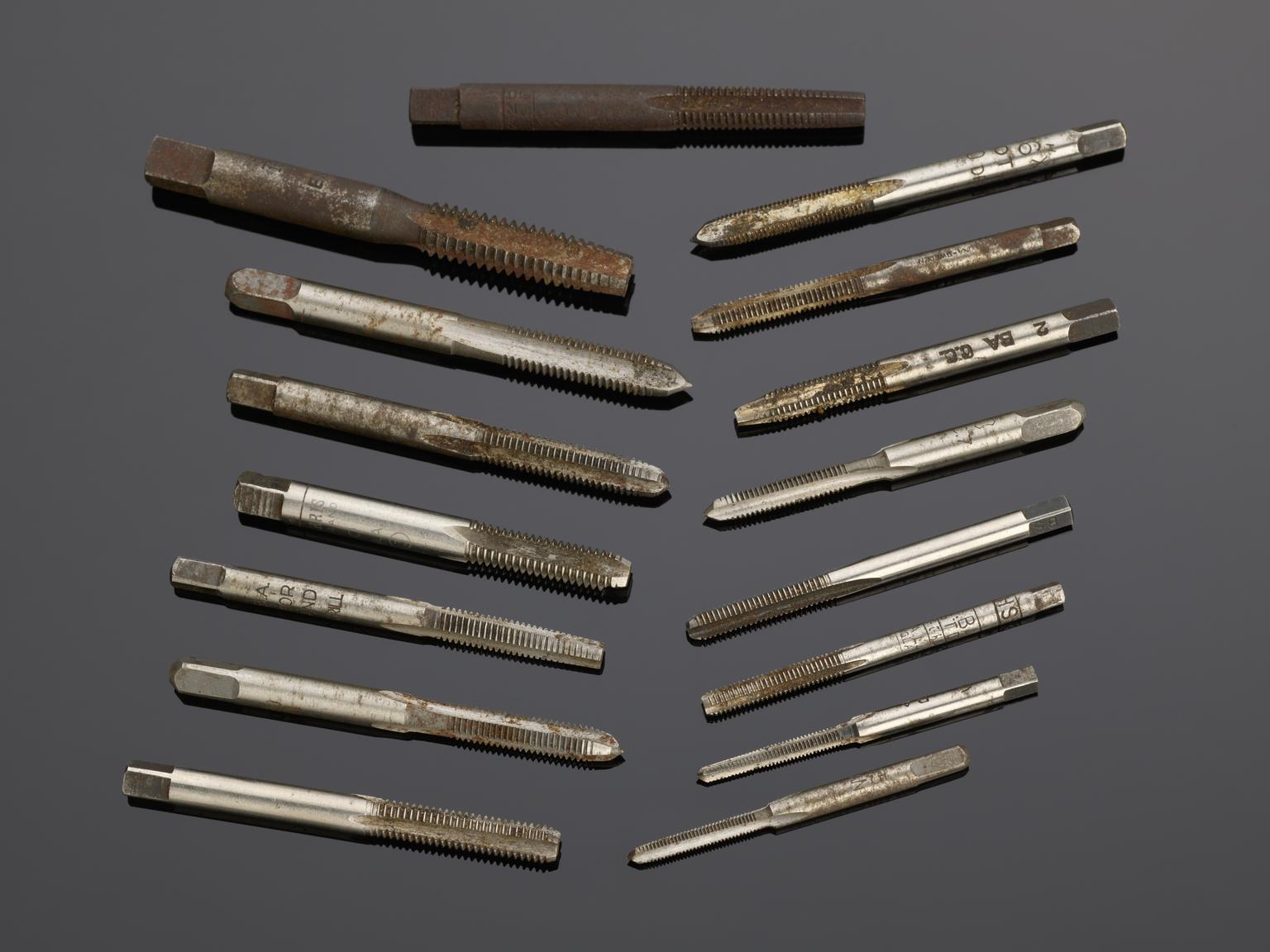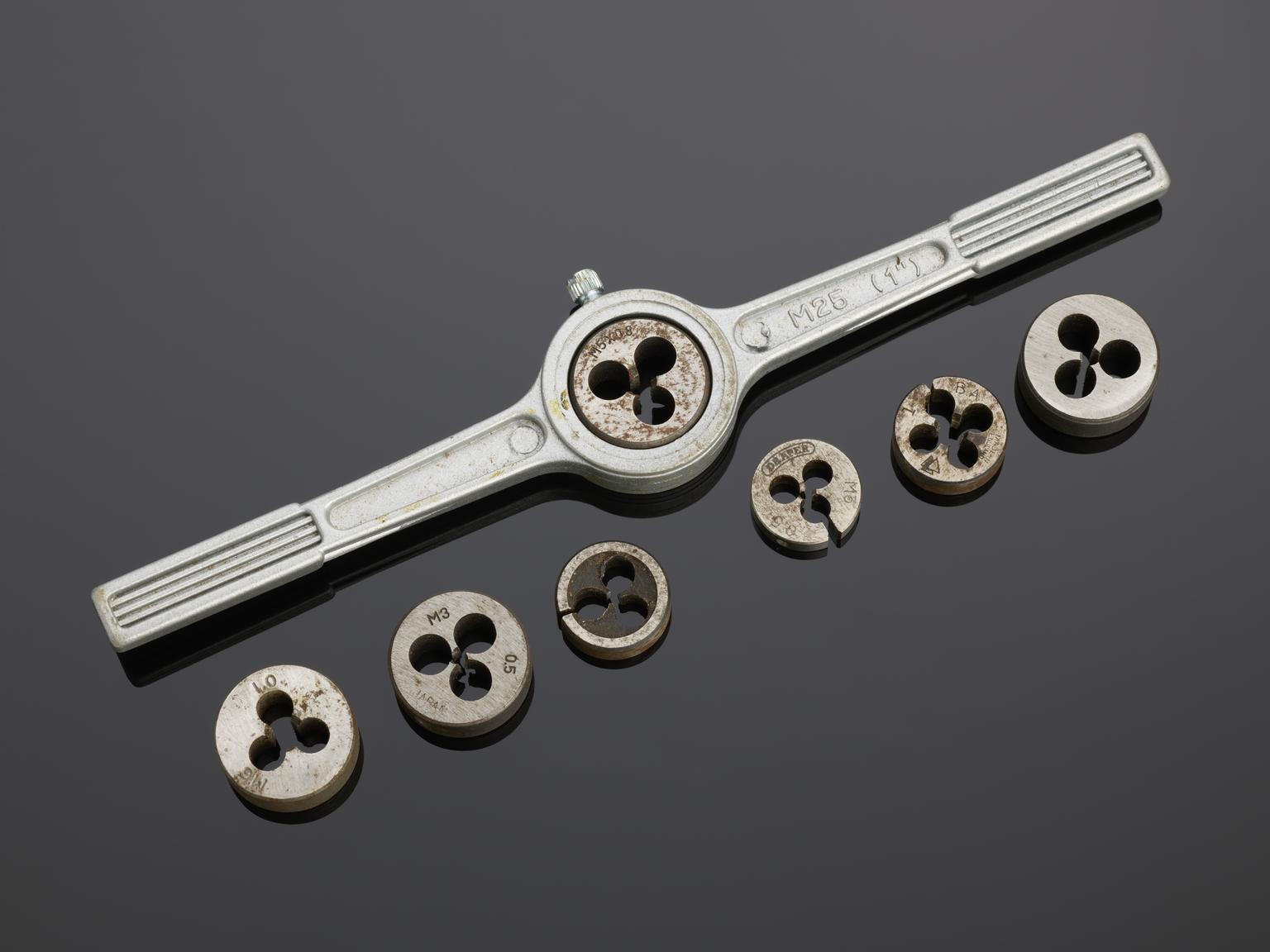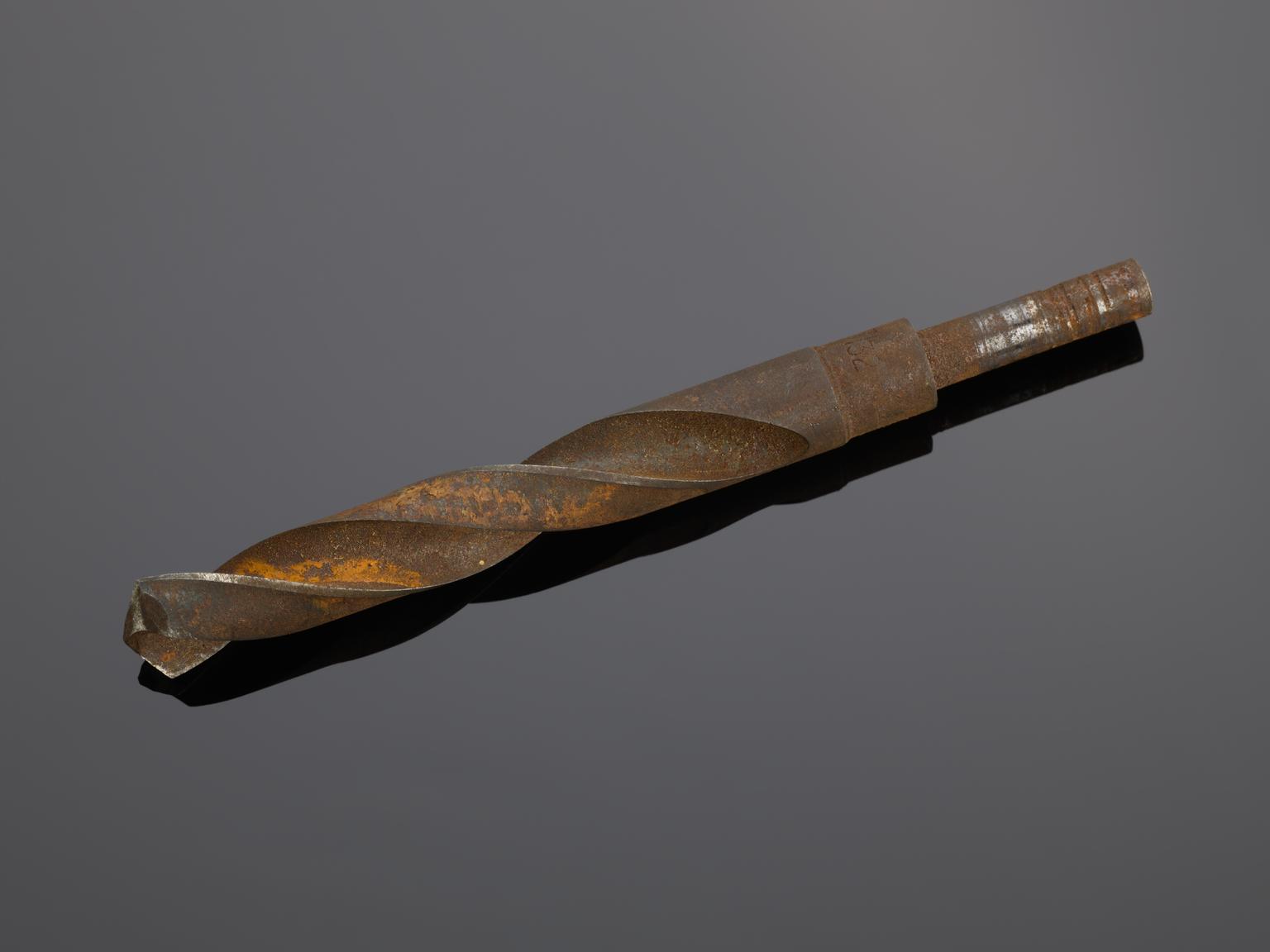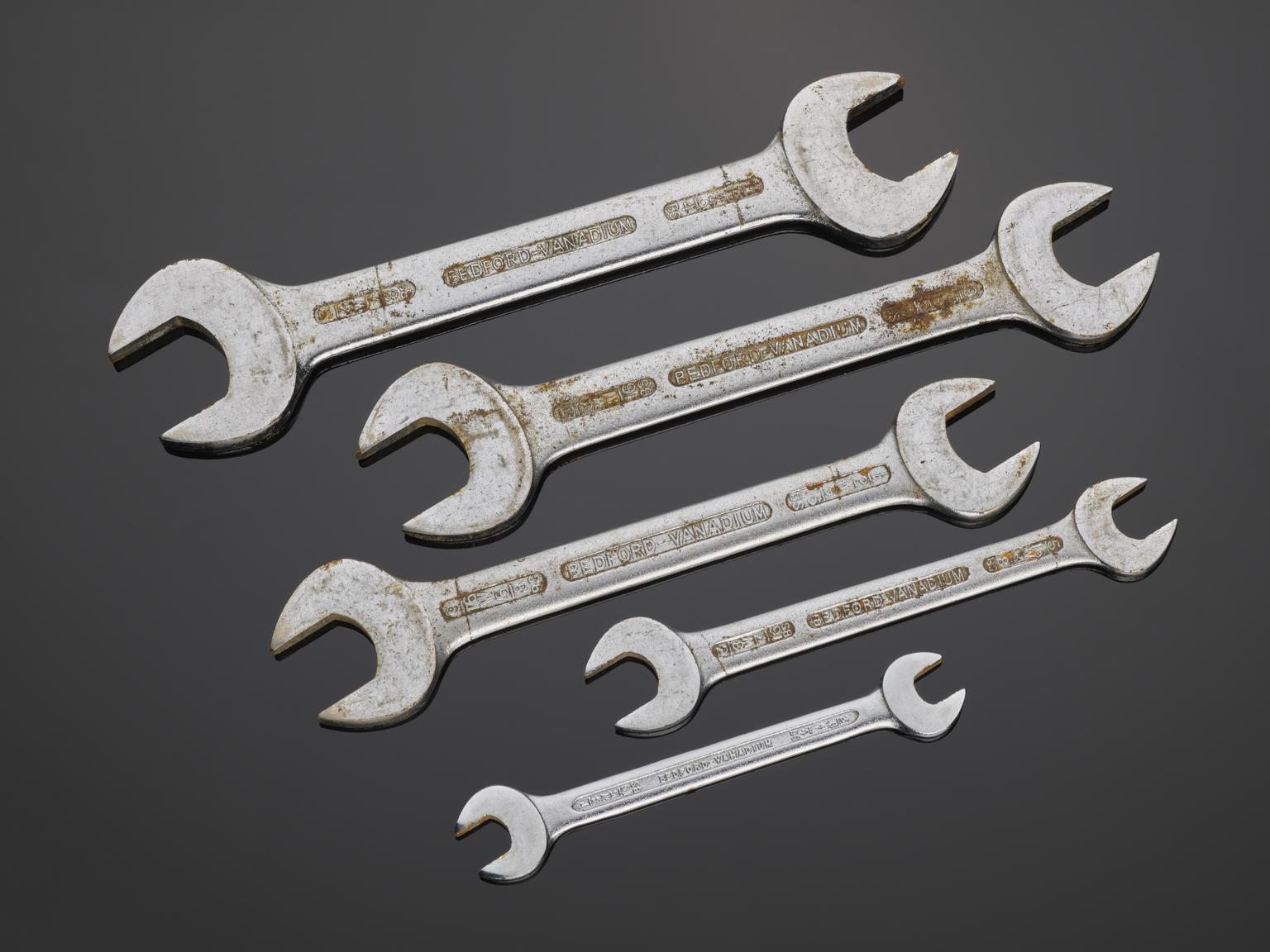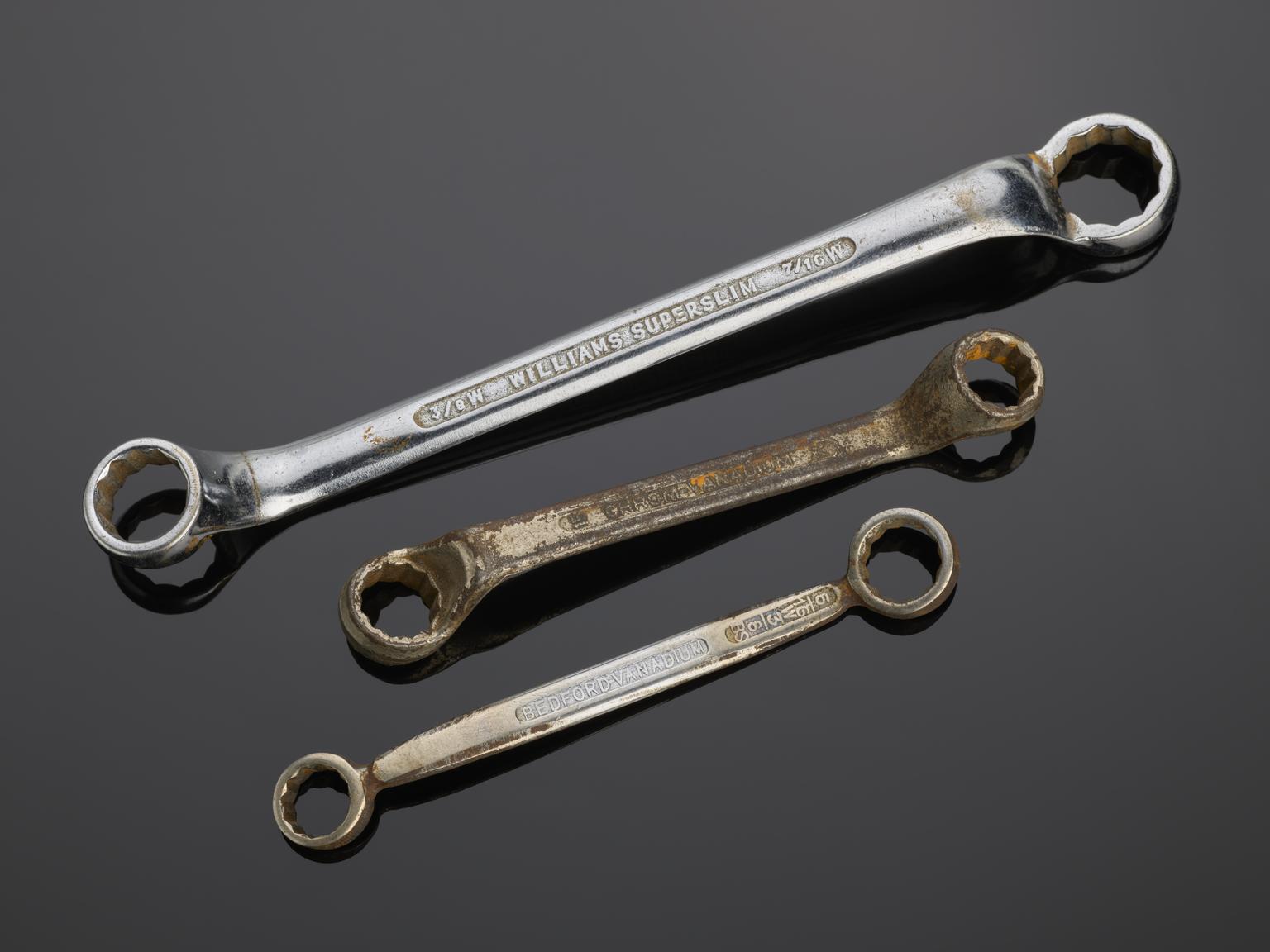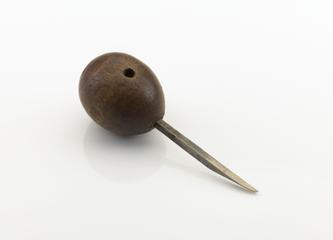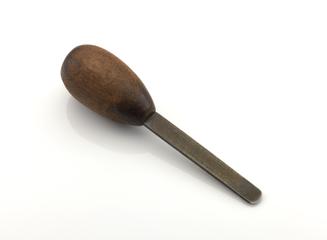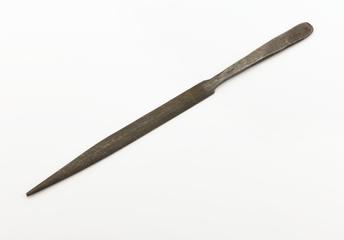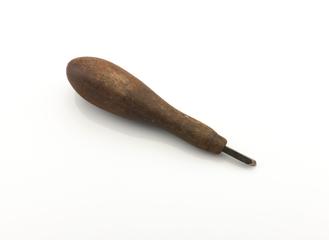Toolbox used during AEI apprenticeship
Sheet metal toolbox, fabricated from sheet mild steel and spot welded together, 1963. Made and used by Alan Pedder when serving his engineering apprenticeship at AEI (Associated Electrical Industries) in Trafford Park, Manchester, 1963-1969. Alan made this toolbox while on the sheet metal section of the AEI Training School, and it features a small brass plate with his name.
More
This toolbox provides a snapshot of an interesting transition point in Manchester’s technical education landscape.
The Metropolitan-Vickers Electrical Engineering Company (later to become AEI) apprenticeship and technical education system was developed in the first half of the 20th century by its Director of Research and Education, Sir Arthur Percy Morris Fleming.
After 12 months in the Training School the apprentice's trade or skill was determined. They could continue in the field of tool maker, pattern maker, welder, mechanical fitter, electrical fitter, sheet metal worker, turner, instrument maker, wireman, armature winder, draughtsman or foundry worker.
Apprenticeships and attending Technical College made it possible to enter a successful engineering career. This form of education and training was not open to women.
- Measurements:
-
overall: 152 mm x 406 mm x 254 mm,
- Materials:
- steel (metal) and brass (copper, zinc alloy)
- Object Number:
- 2021-1694/1
- type:
- toolbox
- Image ©
- The Board of Trustees of the Science Museum




